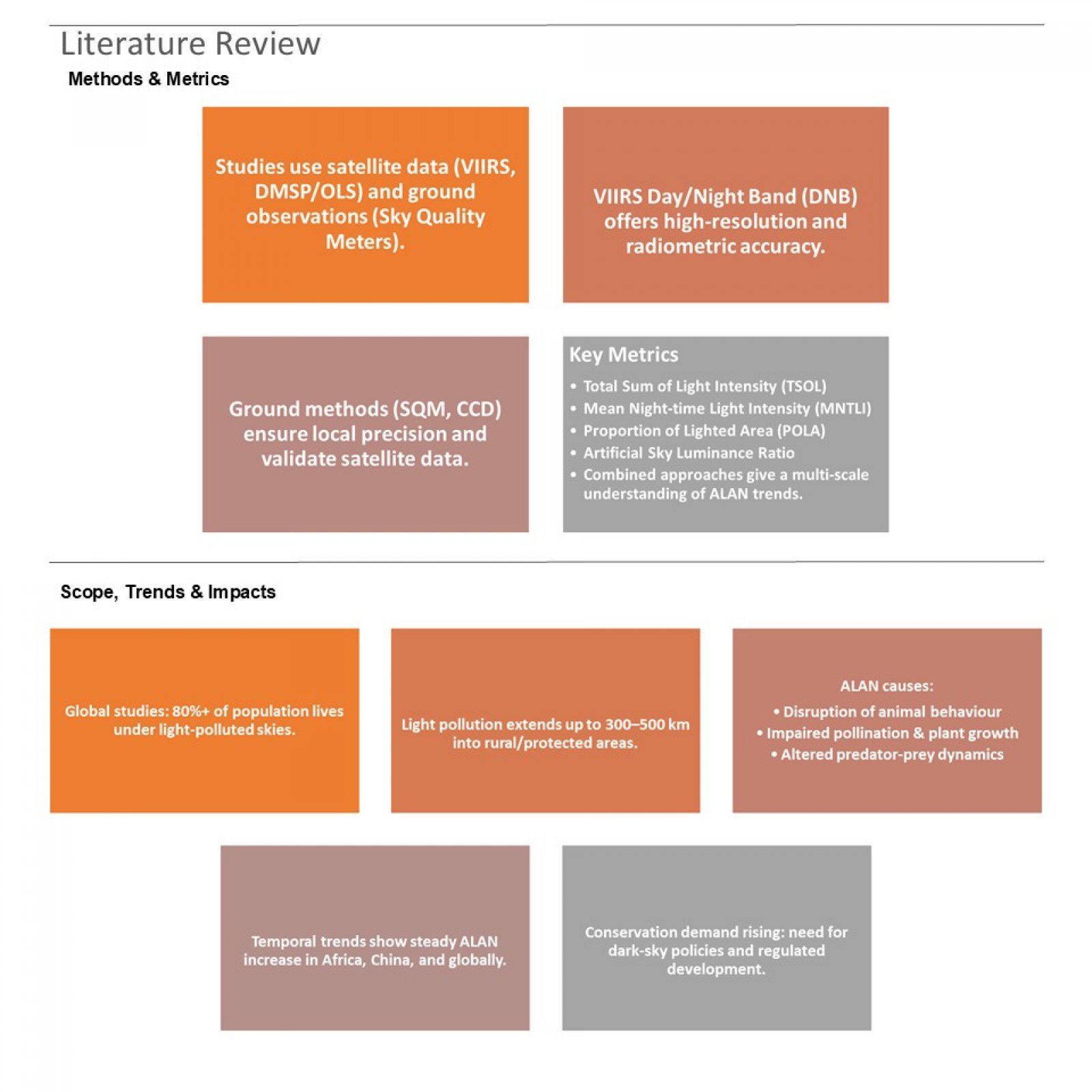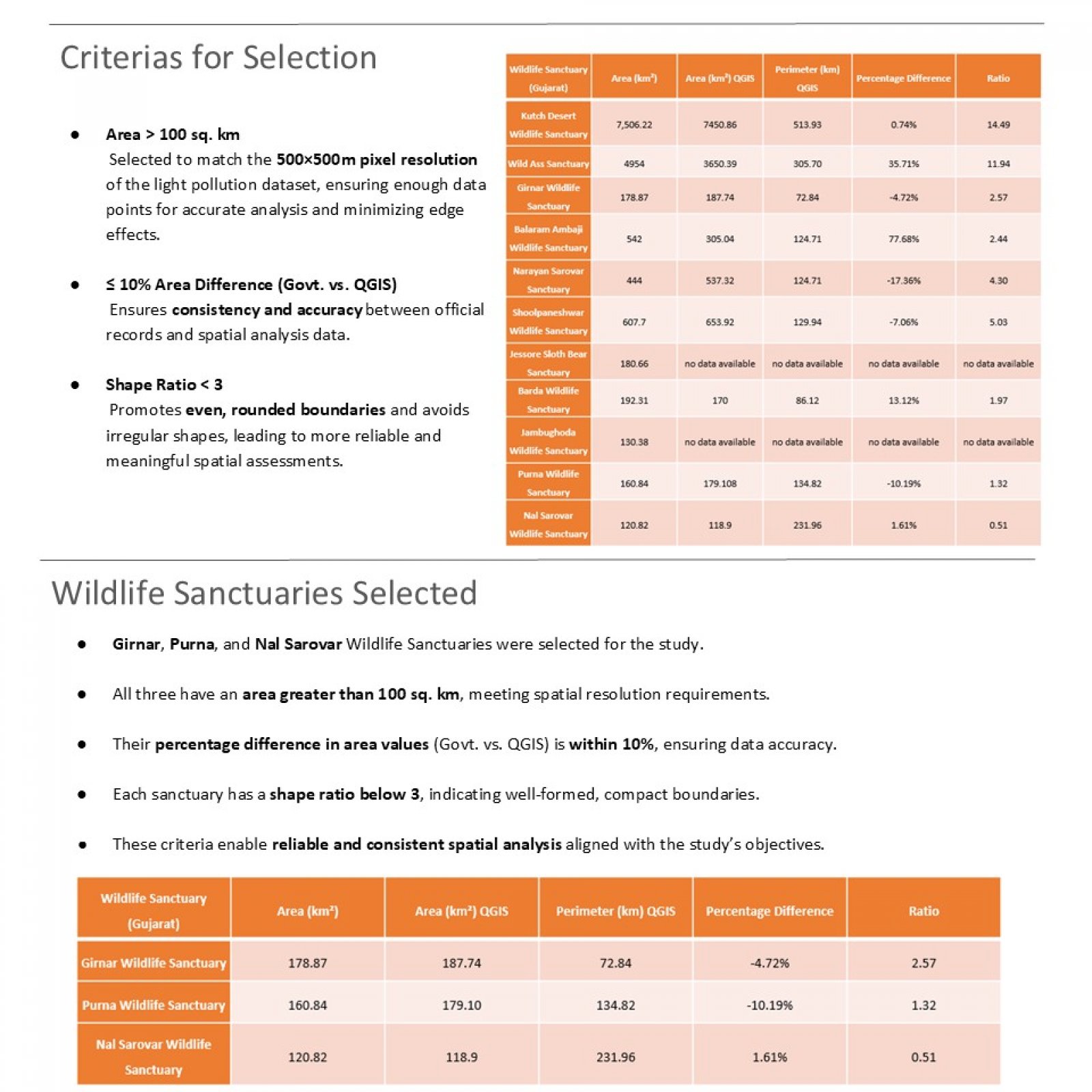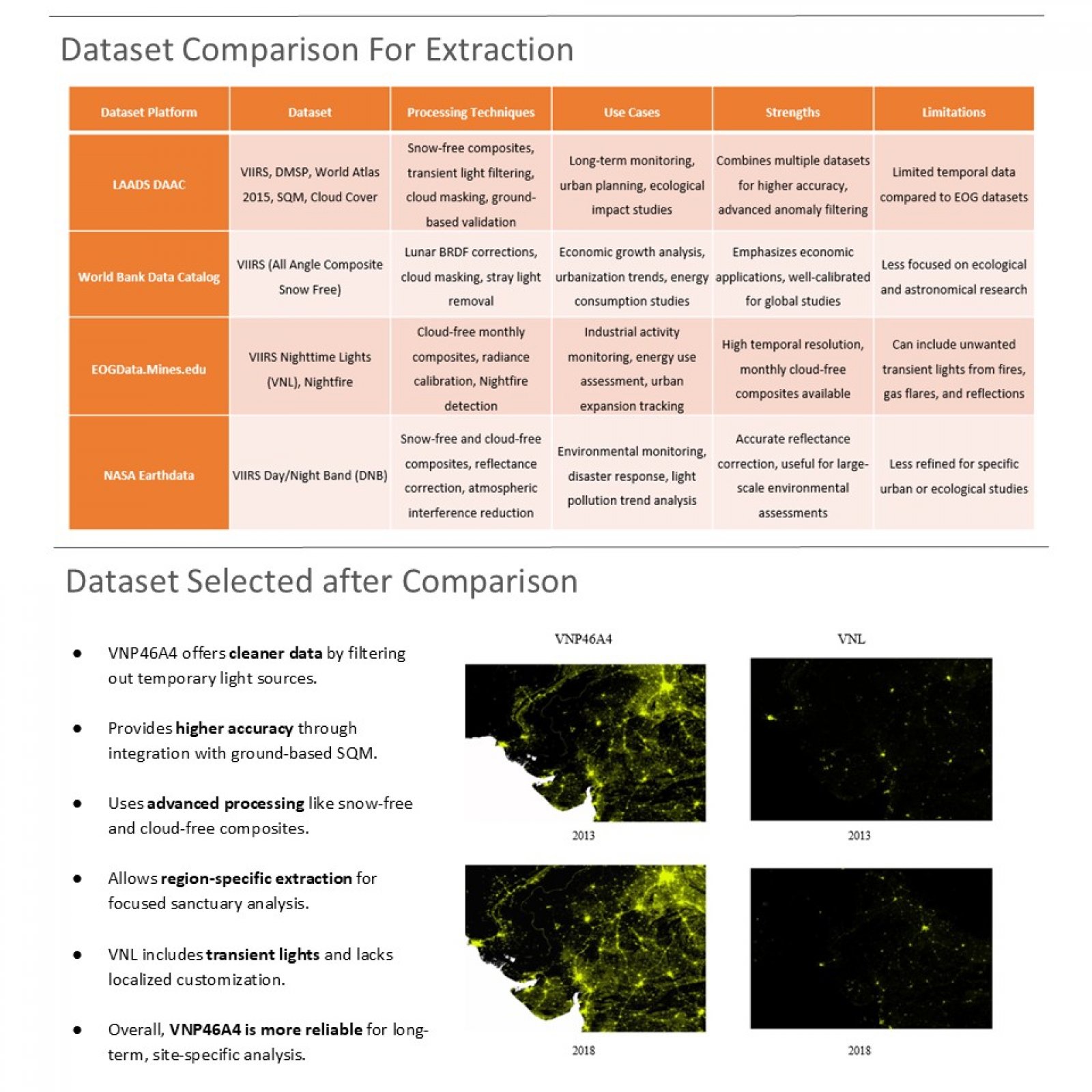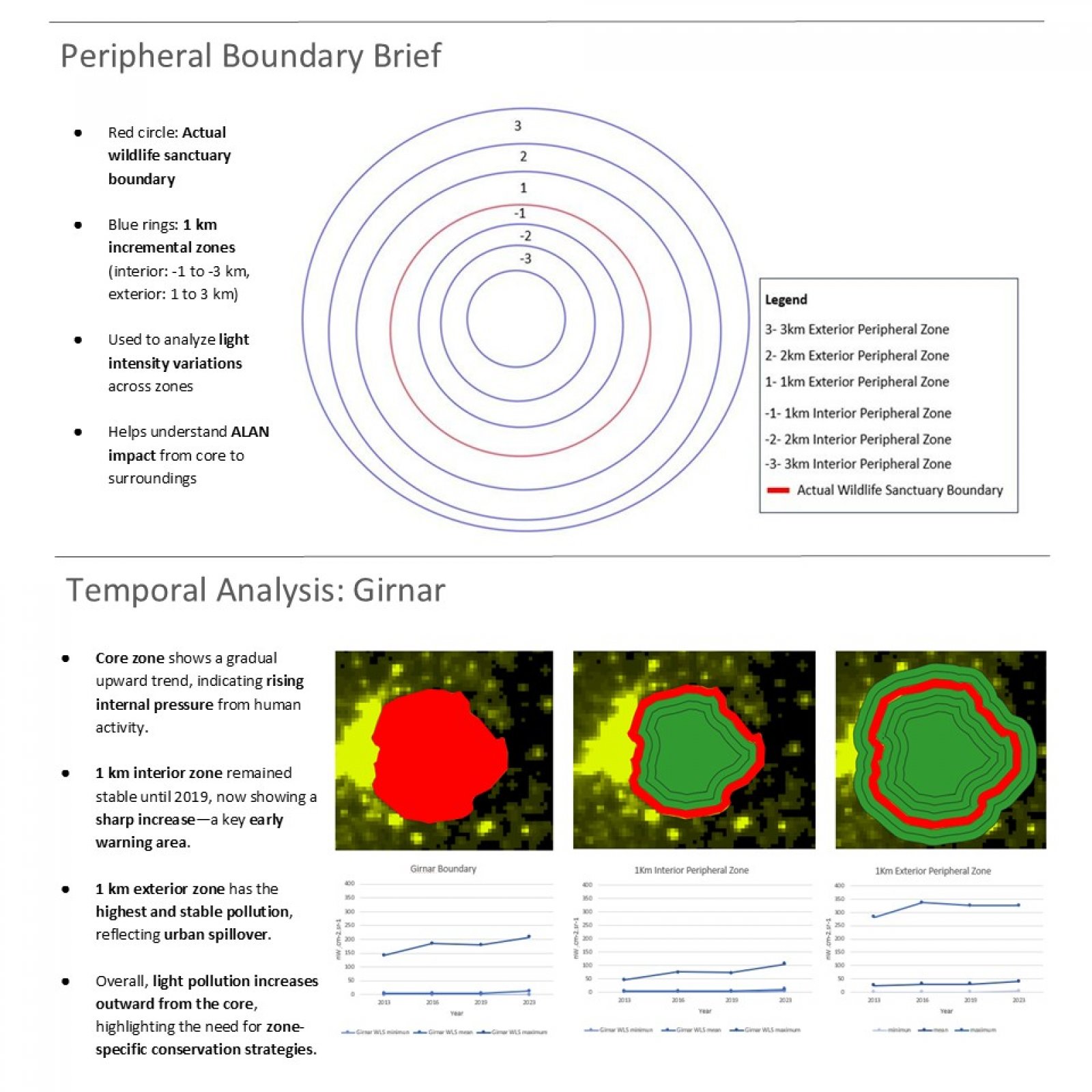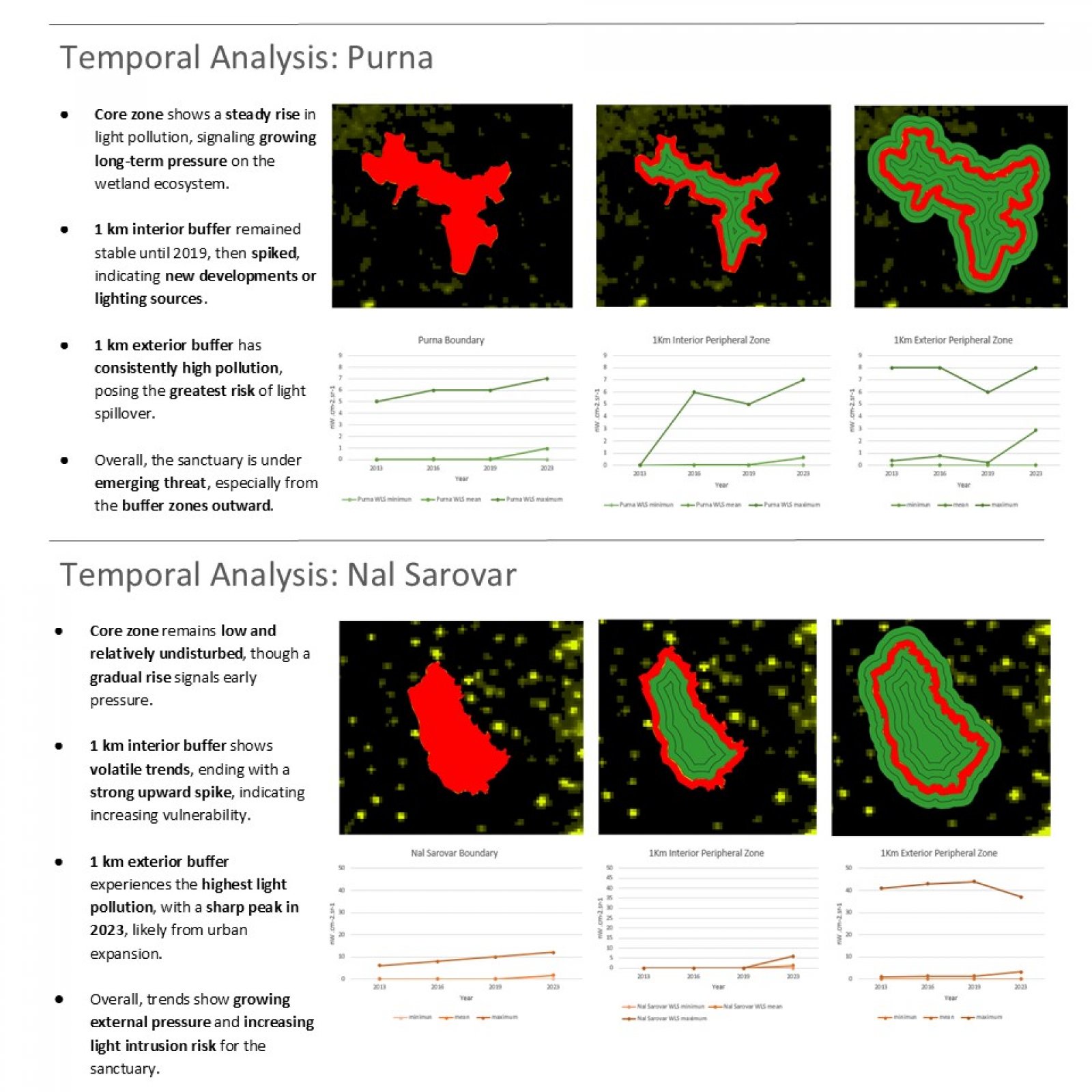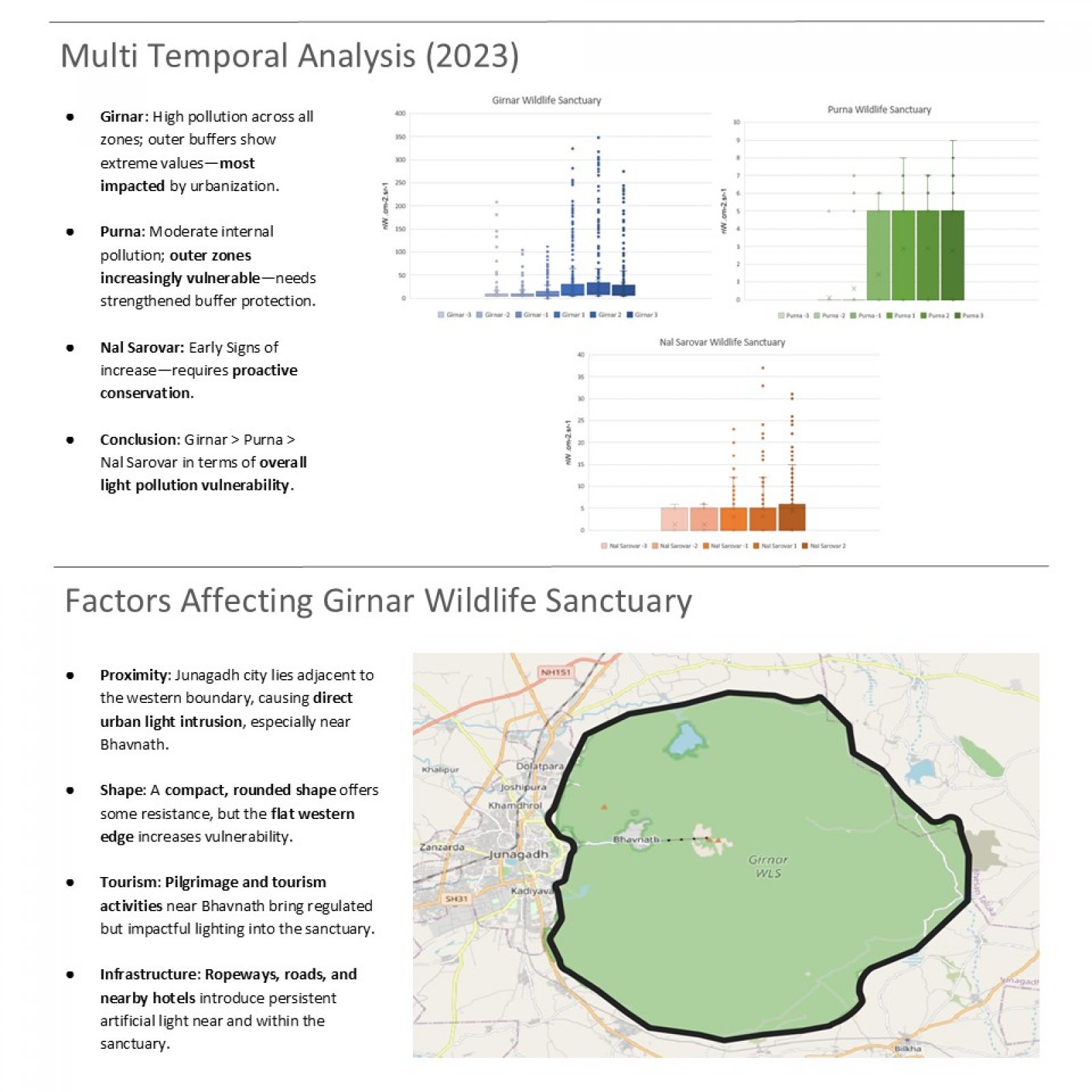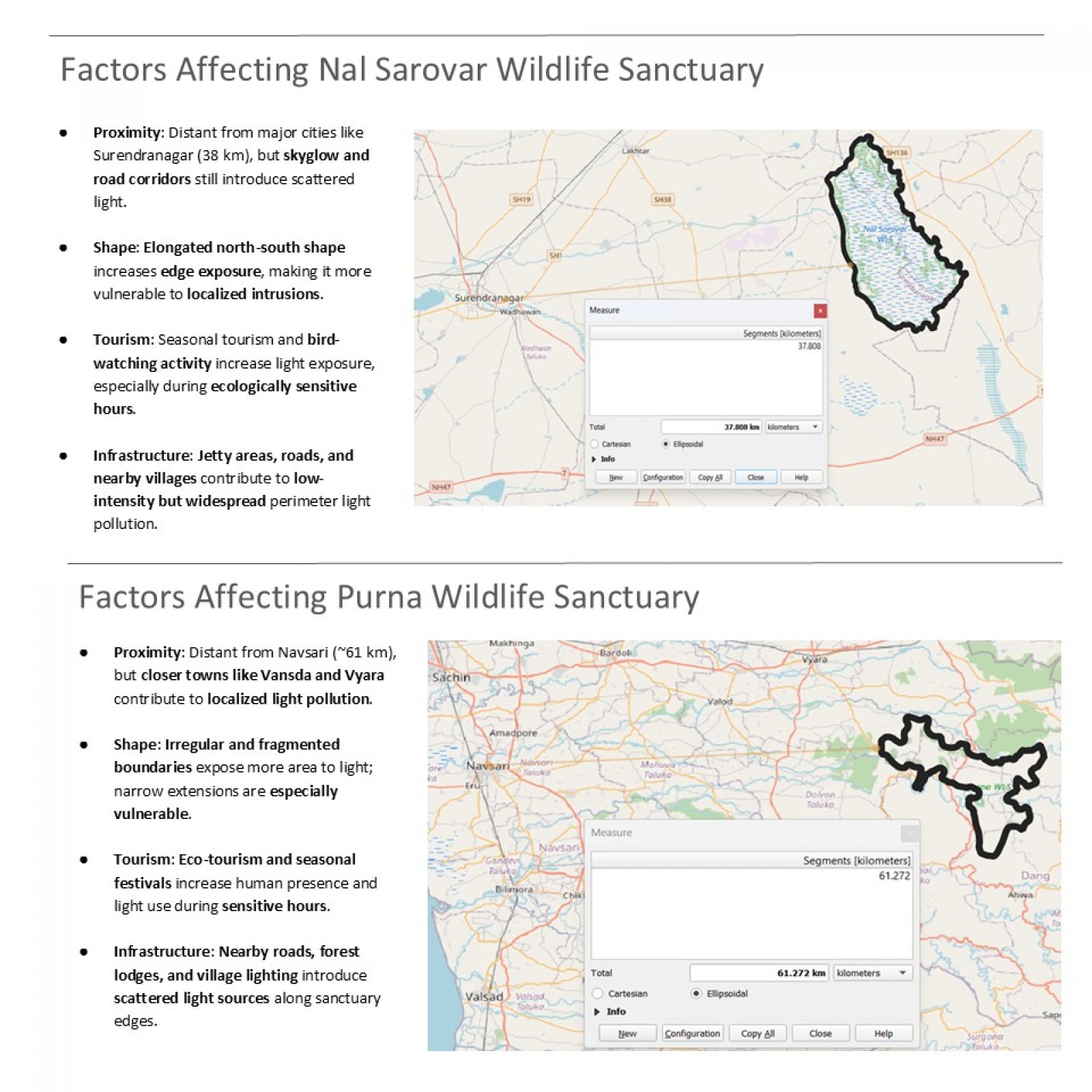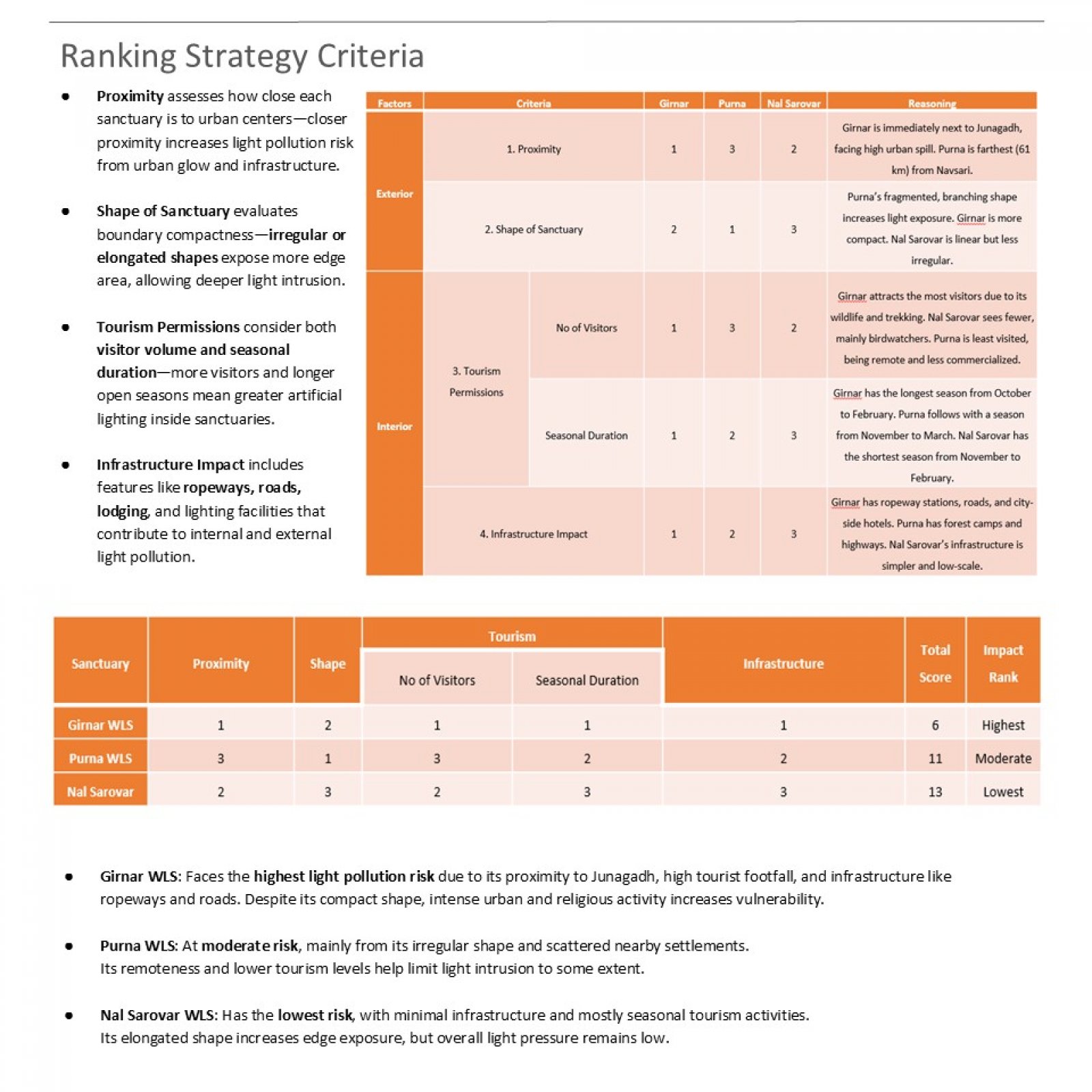Your browser is out-of-date!
For a richer surfing experience on our website, please update your browser. Update my browser now!
For a richer surfing experience on our website, please update your browser. Update my browser now!
This study examines the growing threat of Artificial Light at Night (ALAN) to India's national parks and wildlife sanctuaries, focusing on Girnar, Purna, and Nal Sarovar sanctuaries in Gujarat. Using VIIRS satellite data (VNP46A4), temporal analysis from 2013 to 2023 revealed a consistent rise in light pollution, driven by urbanization, tourism, and infrastructure development. Girnar was found to be the most vulnerable due to its proximity to Junagadh city, while Purna showed moderate risk and Nal Sarovar remained relatively less affected but exhibited early signs of disturbance. A ranking framework based on proximity, boundary shape, tourism impact, and infrastructure was developed to guide conservation priorities.
View Additional Work
